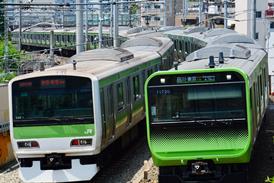Close menu
- Home
-
News
- Back to parent navigation item
- News
- Traction and rolling stock
- Passenger
- High speed
- Freight
- Infrastructure
- Policy
- Technology
- Ticketing
- Business
- Research, training and skills
- Accessibility and inclusion
- People
- Urban rail news
- Suburban and commuter rail
- Metro
- Light rail and tram
- Monorail and peoplemover
- Regions
- InnoTrans
- In depth
- Events
- Data
- Maps
- Tenders & Jobs
- Sponsored content
- Insights
Adopting 5G FRMCS for railway communications
2020-01-09T13:14:00

The future of rail transport critically depends on taking advantage of advanced communications systems to enhance safety, increase automation, cut operating costs and improve the experience for rail passengers. With the Future Railway Mobile Communications System (FRMCS) due to replace GSM-R and other legacy systems, rail operators need to begin ...
Already have an account? LOG IN
To continue…
You’ve reached your limit of content for the month














